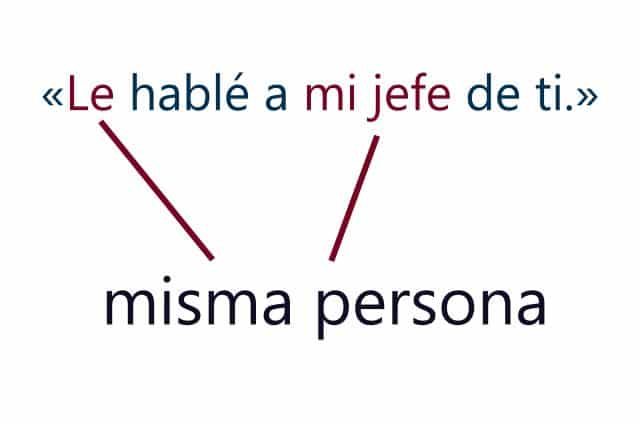
Both "him" and "my boss" refer to the same person.
Coreference is a concept that is used in the field of linguistics . This is the name given to the link established in different linguistic elements that share the same referent .
Many-to-one reference
It can be said that a coreference is a specific type of reference . Reference is called, in this framework, the relationship between a certain expression and what it refers to.
In coreference, two or more linguistic elements refer to the same thing . On some occasions, one of the elements is tacit .
Examples
Let's look at an example: “He is a good player, although his athletic ability is poor.” In this case, there is a coreference between “player” and “his” . The expression “his athletic ability” , as you can see, refers to the “(good) player” . That is to say, we are talking about the “athletic ability” of the “player” mentioned in the first section of the sentence .
Next we will take as an example a slightly more complex sentence: "I told my boss about your situation and he said he would probably call you." Here the two elements that have a common reference are you and my boss . We are faced with a case of indirect object (which used to be called indirect object ), a sequence of words within a sentence that focuses on the recipient of the action of the verb, which is usually a person but can also be a animal or a thing.
The key words in this case are the unstressed clitic pronoun le and the preposition a . The verb, speak , is focused on my boss , which is why such direction is graphed with the preposition ; The pronoun, on the other hand, serves to replace this construction if the recipient already knew it from context: "I spoke to him and he said he would call you" (it is understood who is being referred to). Returning to the example in the previous paragraph, we have a coreference because both elements are present, and they point to the same person.
Avoid repetitions
Many times coreference is used to avoid repetitions. A text may indicate: “Lionel Messi was born in Rosario. The FC Barcelona player always felt attracted to football and showed an innate talent, although no one expected Jorge and Celia's son to become a world star." In this case, “Lionel Messi” , “the FC Barcelona player” and “Jorge and Celia's son” maintain a co-reference relationship, since they point to the same person. For writing, it is preferable to resort to coreference instead of reiterating “Lionel Messi” three times ( “Lionel Messi was born in Rosario. Lionel Messi always felt attracted to football…” ).

Through coreference, we avoid repeating the name "Lionel Messi."
Although coreference can be very effective and convenient to avoid redundancy , it is important not to overuse synonyms or constructions that can replace the original, since we run the risk of overloading the message. If we go back to the previous example and rewrite it avoiding coreference but leaving the player's name at the beginning of the first sentence, the paragraph is perfectly understood. To do this we simply make use of the context , something that our brain perceives and calculates naturally thanks to linguistic training.
As long as we do not move away from the original sentence, that is, as long as we remain in the same paragraph, and above all, we do not mention another subject, it is not really necessary to use synonyms for the receiver to understand the message . Even if we needed to talk about another person, if their gender was the opposite we could take advantage of this property to distinguish them through pronouns, articles and adjectives, although in that case we would have a coreference: « John came to see me. There was Martha . He was surprised, but she knew he would come .
